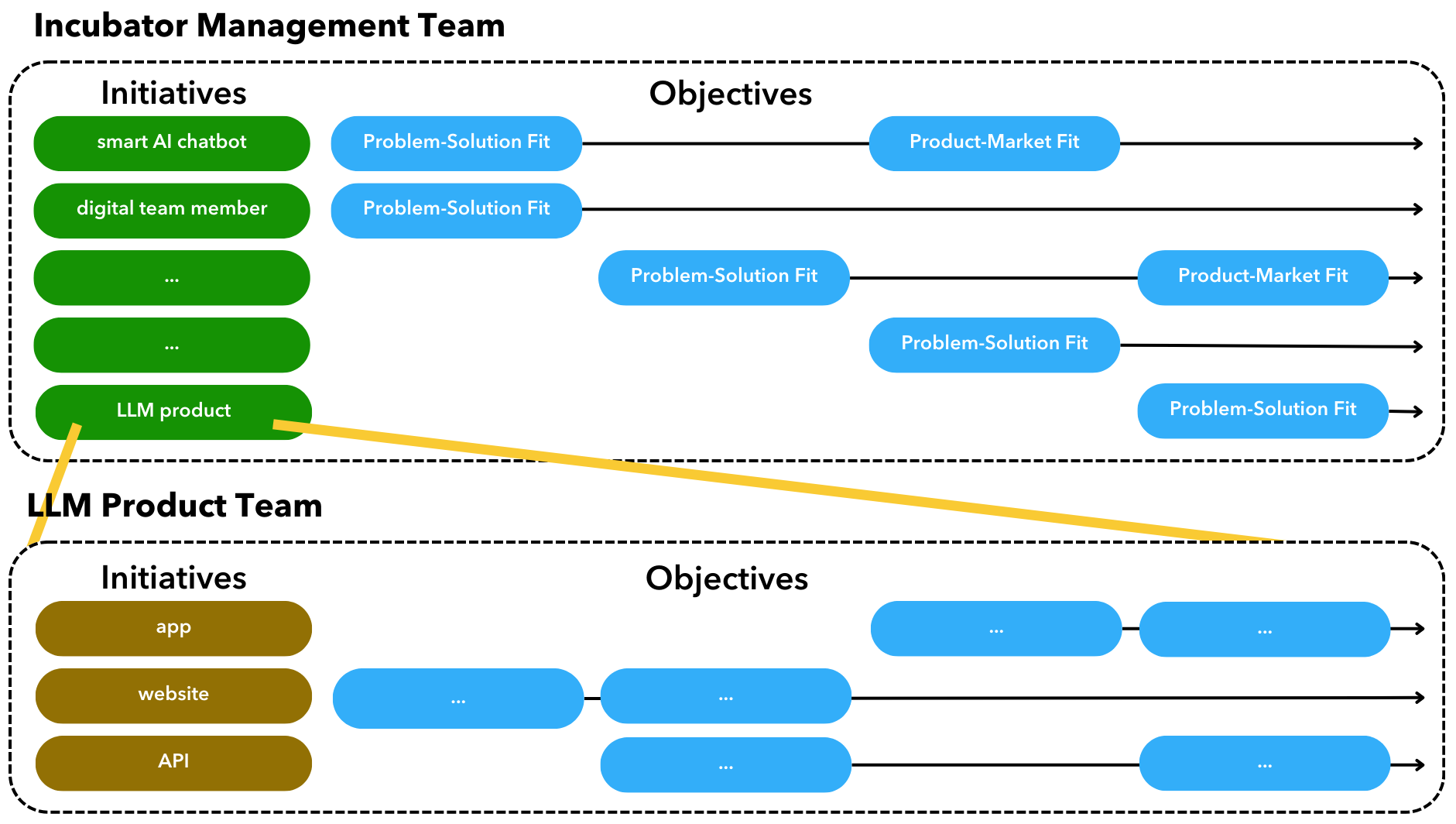Initiatives versus Objectives
Author: Jurgen Appelo
People working with Objectives (for example, with the OKRs framework) seem a bit confused by the concept of Initiatives. Some consultants put Initiatives below Objectives; others put them above. (And most have never heard of Initiatives.) Who is right, and who is wrong?
The Initiatives vs. Objectives discussion is confusing, as Allan Kelly also noted in his post, “What do you mean by Initiatives and OKRs?” However, I believe the matter can be resolved gracefully.
Let’s start with an example.
I once had the idea to write a book about agile leadership called Management 3.0. That was an Initiative.
An Initiative is all the work needed to offer (discover, deliver, and improve) something of value to a defined set of stakeholders. It is something the team provides to their clients.
Working on my Initiative, I did research, started writing, published blog posts, and was thrilled to get a book contract offered by a publisher that stipulated a deadline. Suddenly, I had an Objective: deliver the book’s manuscript to the publisher before a specific date.
An objective is a specific, measurable goal that an individual or team aims to achieve within a defined timeframe. It serves as a guide for actions and decisions, ensuring focus and direction towards a desired outcome.
An Objective always comes after the Initiative. First, you have an idea for creating value, and then you set yourself measurable goals toward desirable outcomes.
An Initiative leads to an Objective
Note the difference between Initiatives and Objectives: Objectives are accomplished or not. At some point, they are done (success or failure), and then they are history. In contrast, Initiatives don’t magically disappear; they keep hanging around! If you don’t give them continued attention, they deteriorate and perish. I still have the Management 3.0 manuscript (the Initiative), and I could start working on a re-release (an Objective) any time I like. Moreover, the book is still on Amazon and other bookstores even fifteen years later. It will not spontaneously disappear.
Horizontal splitting
Once you’re working on an Initiative, it often splits itself into several more specific Initiatives. In my case, as an author, what begins as a manuscript may split into e-book, paperback, and audiobook editions. The various editions of a book are different (but closely related) Initiatives, each likely requiring ongoing care and maintenance.
One Initiative leads to another
You may also find that an Initiative generates additional Initiatives outside the current scope. In my case, the Management 3.0 book led to the Management 3.0 website, newsletter, keynotes, courseware, licensing, etc. Each of these Initiatives was a spin-off of the original idea for a book, and each Initiative required an ongoing investment in maintenance and improvement. Moreover, for each Initiative, I’ve had many separate Objectives, such as “redesign the website,” “migrate the newsletter,” “create new presentation,” “make Delegation module,” “grow to 500 trainers,” and so on.
Even more Initiatives and their Objectives
Initiatives and Objectives can (and should) be managed by the same team. For many years, I was part of the Management 3.0 team that handled everything I just described. First, the team comes up with ideas for new value creation (Initiatives), and then they set themselves goals for experimentation and execution to realize value (Objectives).
Summarizing, we can say that Initiatives are launched and maintained with a succession of multiple Objectives.
However …
Vertical splitting
Let’s have another example.
Imagine your top executive team sees the rise of AI as a reason to launch a corporate incubator for internal AI startups. That is quite obviously an Initiative. Then, they might set a goal for this new unit to have at least one successful AI product within one year. That is clearly an Objective.
If all goes well and the corporate incubator’s management is smart, they will invest small amounts of money in many AI product ideas from different people across the organization. One person might suggest a sophisticated AI chatbot, another wants to build a digital team member, and a third would like to experiment with LLMs.
The Initiatives of an incubator management team
Let’s say the management team makes twenty minor investments to see which ideas can achieve Problem-Solution Fit (Stage 2 of the Lifecycle Stages) within three months. If they accomplish this Objective (most will probably fail), they can receive follow-up funding to achieve Product-Market Fit (Stage 4 of the Lifecycle Stages). Now, we are talking about twenty different Initiatives at a lower organizational level, each of which hopes to get to the follow-up stages.
Each person or startup team working on a product idea will likely have their own set of Initiatives and Objectives within their (smaller) scope of value creation. For example, the team building an LLM might have a mobile app Initiative, a website Initiative, and an API Initiative, each requiring a separate series of Objectives.
Initiatives and Objectives at two levels
As you can see, everything I described earlier (Initiatives supported by multiple Objectives) applies to each product team separately, too. Logically, the Objectives these startups set for themselves must satisfy the Objectives at a higher level, or else they lose their funding! The LLM team should seek success on at least one of their Objectives to provide the necessary evidence to the management team that they are worthy of the next round of funding.
In summary, Initiatives and Objectives at the higher organizational levels trigger and influence Initiatives and Objectives at the lower organizational levels.
So, do Initiatives lead to Objectives, or do Objectives lead to Initiatives? Well, it depends. 🙂
If you look at just one team, Initiatives come before Objectives. However, if you view the relationship between two organizational levels, Objectives may come before Initiatives.
Conclusion: Within the same team, Initiatives come before Objectives. However, the Objectives at higher organizational levels may trigger new Initiatives at the lower levels to satisfy those higher-level Objectives.
That’s it. Problem solved. No more confusion, I hope. 😏






